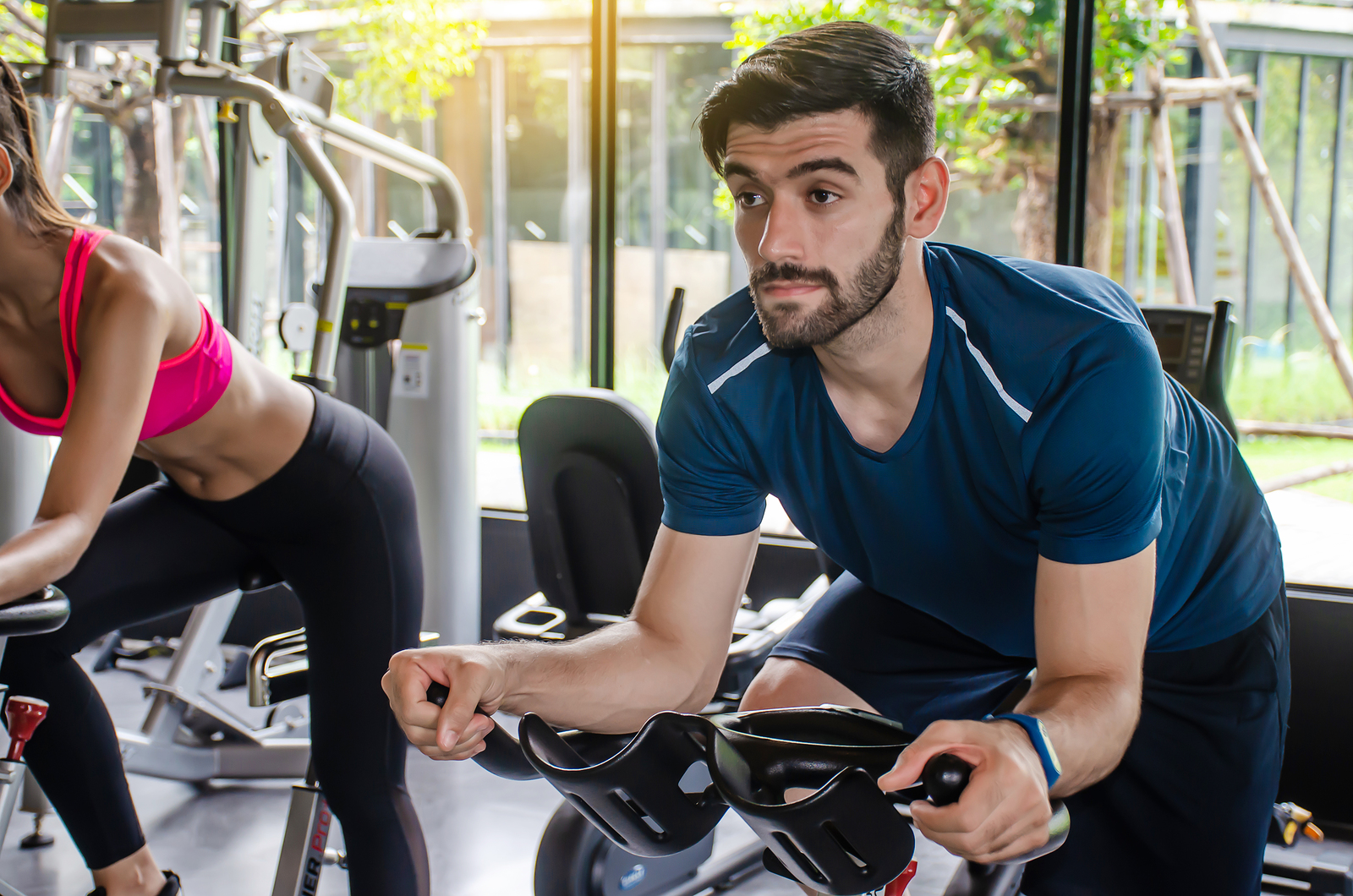Fitness is often the best thing you can do for your body and mind. In this post, we’ll address many common workout and nutrition questions for beginners just starting their journey to better health.
Every journey starts with a first step. At the same time, workouts can be intimidating for people who’ve never done them. Many people need to learn the right ways to exercise, diet, and maintain discipline and optimism.
Edgard and Diogo Corona, the father-and-son entrepreneurs behind Latin America’s growing Smart Fit network of gyms, know a lot about fitness, motivation, and inspiration.
Edgard Corona got the idea for Smart Fit from a fitness enthusiast he met one day at a café on São Paulo’s Avenida Paulista. She told him that Brazil had just two kinds of gyms—large, high-end ones that cost a lot to attend and cheaper low-end ones that were poorly maintained. The elder Corona realized that the market for gyms in South America had room for a new high-value/low-price (HVLP) concept; this is how the Coronas’ gym brand Smart Fit was born.
For the Coronas, making fitness accessible to everyone—including beginners—is vital. Before your next workout, read what the Coronas say about staying in good physical shape. Below, Edgard and Diogo Corona take turns answering fitness beginners’ most common questions.
1. I Have No Idea How to Work Out or Utilize the Equipment. Where Do I Even Begin?
It’s common for gym newbies to feel uncomfortable when they first start going to a gym. We recommend starting with eight to ten private lessons to alleviate these feelings. Personal trainers can teach proper form, breathing, and rep cadence. A professional trainer can build a program that considers your prior conditions or injuries while helping you attain your fitness objectives.
2. What’s the Best Activity for Weight Loss?
Weight loss requires aerobic and resistance training. Treadmills, stationary cycles, and stair steppers are typically associated with fat reduction.
On the other hand, weight exercises can improve your body’s composition, metabolism, and physique. We recommend five days of cardio in the morning or after resistance training and three to four days of weightlifting per week.
3. Which Workouts Will Increase Muscles and Strength?
A well-planned weight training program using free weights and multi-joint exercises can build strength and muscle. Most individuals benefit from a two-on/one-off, two-on/two-off program four times per week. This lets you exercise each muscle group vigorously once weekly and relax for three days during development.
Start with three sets of four back, quadriceps, hamstrings, chest, and shoulder movements. Biceps, triceps, traps, abs, forearms, and calves can be trained with two to three sets of three motions each. Perform work sets of 13 to 15, 10 to 12, and 7 to 9 reps following one to three warmup sets of each exercise, respectively.
4. How Frequently Should I Work Out?
Your exercise frequency depends on your fitness, objectives, and free time. Loftier goals take longer to achieve. If you have a busy career, a big family, or other responsibilities, you may not have time to exercise for several hours each week. Your goals can require patience.
One-hour workouts three times per week provide clear benefits. However, some people’s muscle development can plateau with this routine. Try starting with three weekly gym sessions and gradually adding to your program every month or so.
5. How Much Time Should I Dedicate to Training?
Again, the answer to this question depends on your current fitness, medium-term goals, and free time for exercise. Some people prefer five or six 30-minute workouts each week, while others desire hour-long workouts three days per week.
Try to base your weekly gym schedule on how many hours you expect to spend there. The quality of the time you spend matters too. For instance, 30 minutes with a specialized trainer can be much more effective than an hour spent texting, conversing, and watching others work out.
6. What’s My Recovery Time Requirement?
Some workouts demand additional recovery time between sets. Fifteen barbell squats target your thighs, glutes, and lower back. Following these sets, you may need three to four minutes of recovery time, whereas you might be able to recover from 15 dumbbell side laterals in just 45–60 seconds.
Consider your objectives, and think about why you’re lifting. A bodybuilder should rest longer between sets to lift the heaviest weight for the most repetitions. By contrast, you should keep your heart rate elevated and move quickly between sessions to burn fat and build stamina when lifting smaller weights.
Weight training beginners may require a day off between the days they exercise. On the other hand, if you never repeat a muscle group workout, you may be able to keep on progressing and becoming stronger without a break. In the meantime, you should do cardio consistently—meaning every day.
7. Do I Need Dietary Supplements?
Begin your fitness journey with effective workouts and healthy food. Heavy sports supplement users are frequently uninformed or motivated by money. You should only consider supplements after 8 to 12 weeks of weight training with a healthy diet and no muscle gains.
8. How Soon Do I Need Protein After Exercise, and Why?
Weightlifting alters metabolism to favor muscle over fat. Due to insulin sensitivity, injured muscle cells can rapidly consume and retain amino acids and carbohydrates. Your post-workout meal outside the standard anabolic window of an hour after working out can delay muscle repair, rehabilitation, and recuperation, whereas eating within this window will improve your long-term results.
9. I’m Very Out of Shape. Should I Take the Risk of Exercising?
Consult your doctor before starting any training routine. If you start a program, ideally, it will be with a personal trainer. In general, consult a medical professional before making any changes that could affect your health. But don’t worry too much. If necessary, get a physical, and make a plan.
10. Is There Such a Thing as Exercise-Free Fitness?
The answer to this question should be obvious. Outdoor activities improve mental and physical health, while inactivity can result in depression. Most exercises are healthy for your heart. Generally, hiking, dancing, cycling, running, and swimming are more fun than staying indoors or walking on a treadmill.
11. How Do I Evaluate the Effectiveness of My Training?
Tracking your fitness progress is crucial to getting results. Coaches or trainers should weigh, measure, and record the body fat percentage of their clients every two to four weeks. Your primary care doctor can prescribe blood tests to check your total cholesterol, LDL-to-HDL ratio, triglycerides, and blood pressure.
How well does your clothing fit? If your shoulders, chest, and back feel tighter, you’re likely becoming stronger. In particular, women whose clothing sizes decrease without an accompanying weight loss may not see their fitness results on a scale; after all, muscle weighs more than fat.
12. How Can I Overcome Muscle Stagnation?
To restart muscle development, analyze your workout program and make any required adjustments. Changing up your calorie intake or specific exercises may suffice for restarting. Ask yourself whether you’re giving it your all every time you work out. Focus, concentrate, and do your best on every set and rep.
Your cardio and workouts can plateau because, internally, your body and mind have decided to only put in the minimum effort required. If this occurs, try alternating weightlifting with cardio.
13. How Can I Continue to Get Workout Inspiration?
This question can be challenging to answer. Daily inspiration comes from inside. Despite support from family and friends, you need to go on your fitness journey alone. Give up junk food and alcohol, and use weights and workout equipment, such as a treadmill, bike, or Stairmaster.
Life’s rewards seldom come easily. Health matters. If you’re having trouble staying inspired, these tips can help.
- Find a gym buddy. Teamwork can work wonders.
- Watch motivational films before working out.
- Plug in headphones to exercise to motivational music.
- Don’t quit!
- If you do quit, consider what you might have achieved if you hadn’t done so.
Keep Reading: https://neofeed.com.br/blog/home/smart-fit-poe-o-pe-na-europa-aumenta-presenca-no-mexico-e-vai-para-o-uruguai/


